Items
Site
The Medicine Chest
keywords is exactly
student
-
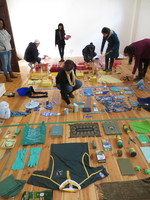
Playtone
Resulting from a 5-day taxonomy workshop which ran from 14 – 18 July 2014 as part of the Honours in Curatorship programme, the PLAYTONE exhibition depicts one of the various exercises students were asked to perform. Colours were allocated to groups, and students instructed to photograph all colour-coded objects during their daily routines, which were then classified using the PANTONE system. In addition to this, students also generated a selection of words they associated with their allocated colours and accumulated colour-coded personal belongings. Participants: Matthew Bradley, Annchen Bronkowski, Thea Ferreira, Sakhisizwe Gcina, Gail Gunston, Sharne McDonald, Mari McFarlane, Mosa Motaung, Thandiwe Msebenzi , Chloe Obermeyer, Bianca Packham, Lindelwa Pepu, Tazz Rossouw, Phenduliwe Sibisi -
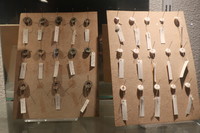
Buttons
A display of a collection of pins, buckles and buttons excavated from the washing pools used by slaves on Table Mountain. Taken from their dusty boxes in storage they are currently exhibited as part of Skotnes's 'Division of the World' (Department of Archaeology). -

Division of the World
"Undergraduate students regularly engage in discussions around certain displays as part of their teaching programme (N. Zachariou, personal communication, 27 May 2020), and the installation is also used to introduce visitors (exchange students and school children, for example) or students from other UCT departments (architecture students taking the archaeology module) to the department and the discipline (J. Parkington, personal communication, 20 June 2020). It has even been described as a ‘super curriculum’ (or as ‘several super curriculums’) for how it visualises what archaeology does on both an empirical and procedural level (J. Parkington, personal communication, 20 June 2020)" (Liebenberg 2021: 210). -
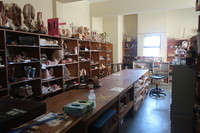
The workshop
"Held in the Department of Human Biology in the Division of Clinical Anatomy and Biological Anthropology, this collection consists of prepared specimens – both bottled and plastinated, anatomical models – and a skeletal repository used for research purposes. The materials are kept in three separate rooms, with the anatomical models in one, the prepared and plastinated specimens in another and the skeleton repository in its own room behind locked doors, viewable by appointment only. The room housing the anatomical models functioned as a workshop when modelmaking was still offered to first year medical students as an elective course: its walls are lined with shelves that display models made from materials ranging from papier-mâché to modern silicon copies and are taxonomised according to their anatomical representations, such as ‘the eye’, ‘head & neck’, ‘dentistry’, ‘embryology’, ‘lungs’ and ‘cardiovascular system’, to name a few. The models represent each anatomical section and are brightly coloured to differentiate the different parts of the human body and aid in identification. Many of the models can be dismantled into separate pieces and, like a puzzle, be reassembled into their original shapes. Interspersed with these models are rolled-up charts depicting organs, bodily systems and anatomical sections of the body in two-dimensional form, as well as old student modelling projects. A selection of animal skeletons is displayed on the far side of the room, and a shelf with a few anatomical specimens in formaldehyde is across from it" (Liebenberg 2021: 121 - 122). -
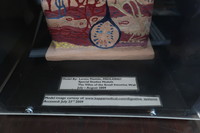
'Villus of the small intestine wall'
A student model of the ‘Villus of the small intestine wall’ found in the workshop of the Anatomy Building, UCT. -
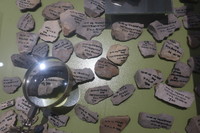
Stone tools
"By positioning artefacts to emphasise their labelling (stones are positioned to reveal the details written on them), including seemingly familiar objects and expanding and shrinking timelines, the installation [Division of the World] draws attention to the framing devices, tools and methods of the department’s insiders" (Liebenberg 2021: 207). -
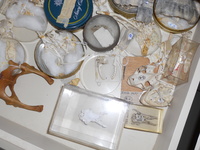
Things zoological insiders look at
A sample box of archaeological specimens shown to first year students. -
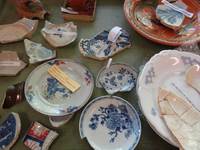
Things archaeological insiders look at
A variety of pottery shards of Asian porcelain, European earthenware and British stoneware in a drawer in the Department of Archaeology, UCT. -
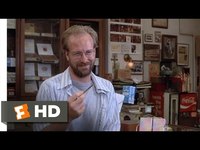
Weighing Smoke
PAUL That’s the man. Well, Raleigh was the person who introduced tobacco in England, and since he was a favourite of the Queen’s – Queen Bess, he used to call her – smoking caught on as a fashion at court. I’m sure Old Bess must have shared a stogie or two with Sir Walter. Once, he made a bet with her that he could measure the weight of smoke. DENNIS You mean, weigh smoke? PAUL Exactly. Weigh smoke. TOMMY You can’t do that. It’s like weighing air. PAUL I admit it’s strange. Almost like weighing someone’s soul. But Sir Walter was a clever guy. First, he took an unsmoked cigar and put it on a balance and weighed it. Then he lit up and smoked the cigar, carefully tapping the ashes into the balance pan. When he was finished, he put the butt into the pan along with the ashes and weighed what was there. Then he subtracted that number from the original weight of the unsmoked cigar. The difference was the weight of the smoke. TOMMY Not bad. That’s the kind of guy we need to take over the Mets. PAUL Oh, he was smart, all right. But not so smart that he didn’t wind up having his head chopped off twenty years later. (Pause) But that’s another story. -
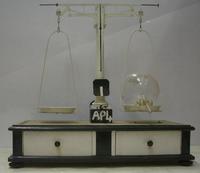
Weighing Air
An example from demonline (UCT Physics Department’s website with descriptions of educational demonstrations). Its descriptions reads: "A spherical flask of about 1 litre is suspended from one arm of a crude chemical balance. It is counterpoised by weights in the other pan, the tap attached to the sphere being open. This gives (roughly) the true weight of the glass. Unhook the sphere from the stirrup, attach the rubber tube from a rotary vacuum pump to the glass tube and evacuate for around 30s. Close tap, and re-attach stirrup. There will now be an upthrust on the flask equal to the weight of air removed, and the weights in the other pan will have to be reduced by about 1.2 g to restore the balance. Open the tap again: the air can be heard rushing into the flask (class must keep quiet), and the flask suddenly descends again". -
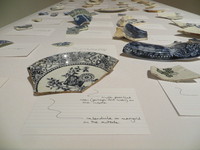
Appendix (installation shot)
A variety of pottery shards consisting of Asian porcelain, European earthenware and British stoneware sourced from the University of Cape Town Archaeology department and subjected to a botanical analysis by a graduate of the Biological Science (Botany) Department. -
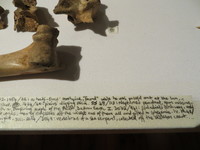
Appendix (installation shot)
A variety of bones sourced from the University of Cape Town Archaeology and Zoology departments, playfully re-imagined by the students as a collection owned by a time-travelling anthropologist - collecting samples across time and sometimes, across dimensions. -

Lodestone
An example from demonline (UCT Physics Department’s website with descriptions of educational demonstrations). Its description reads: ‘A lodestone is suspended by a string. Show that it rotates on bringing a magnet near it. Dip it into iron filings and show that it picks them up.’ -

Fools and other stories
My copy of Ndebele’s 'Fools and other stories', read and underlined in 2001. -
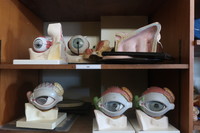
Seeing
Educational models found in the Anatomy workshop: "Borrowing from Herbert Read’s art historical discussion on looking, Digby posits that the biomedical practitioner’s generally critical attitudes were shaped in part by their limited recognition of indigenous medicine during this period – ‘what we see is inseparable from how we see; the eye is not innocent, and vision is partial’ (Digby 2006: 356) and, quoting Read, ‘we see what we learn to see, and vision becomes a habit, a convention, a partial selection of all there is to see’ (in Digby 2006: 356). Accordingly, Digby argues that the Western practitioners would have had, at best, only a partial view of the different medical systems in South Africa during this period (Digby 2006: 357) and probably only to the extent that it was a threat to their own livelihood and authority – as evidenced in the 1928 Medical, Dental and Pharmacy Act that Floyd helped instate" (Liebenberg 2021: 55). -

'How Zoology was taught in the past'
The wall text accompanying these charts in the Hunterian museum, Glasgow, reads: "In the late 19th and 20th centuries, before the advent of colour slides that could be projected, the teaching of Zoology depended heavily on the use of wall charts to illustrate lectures. They were hung on a special pulley system at the front of the lecture theatre and, because of their large size, could be clearly seen from the back of the class". -

Looking down
Educational graphs spotted en route down to the Mantle Room, Department of Geological Sciences, University of Cape Town. Situated in the bowels of the Leslie Social Sciences Building on upper campus, the Mantle Room "houses a collection of upper mantle-derived materials (mantle xenoliths and xenocrysts, kimberlites and related rocks and megacrysts, as well as deep crystal xenoliths) that is most likely the largest of its kind. The collection was assembled over the past 50 years and has been and continues to be an invaluable and irreplaceable resource for mantle research. Informally named the “Mantle Room” collection, it is maintained under the auspices of the Department of Geological Sciences”(Department of Geological Sciences 2021). -

A1.21-A1.21.1
An object from BC666: Walter Floyd's physiology notes from when he was a student. -
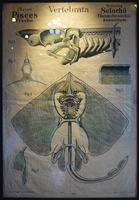
Scientific atlases
"Used from the 18th to the 20th centuries, the scientific atlases provided, for example, simplified, generalised and idealised versions of the objects of anatomy, physiology, botany, palaeontology and astronomy, to name a few, guiding the student and practitioner to what was worth looking at, how it looked and, perhaps most important of all, how it should be looked at (Daston & Galison 2007:23). The establishment and representations of these working sets of objects, and the standardised procedures for studying them, thus extended the initial influence exercised on the individual traveller in the field. By controlling the very act of seeing and by creating a sense of individuals working as members of academic communities, the atlases shaped the subjects and the objects of their disciplines. Processes initiated in the field and reinforced in institutions, societies and museums laid the foundation for procedures still used by the disciplinary insiders of university departments today" (Liebenberg 2021: 111).


